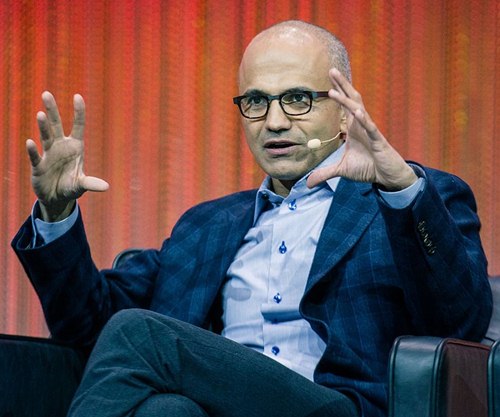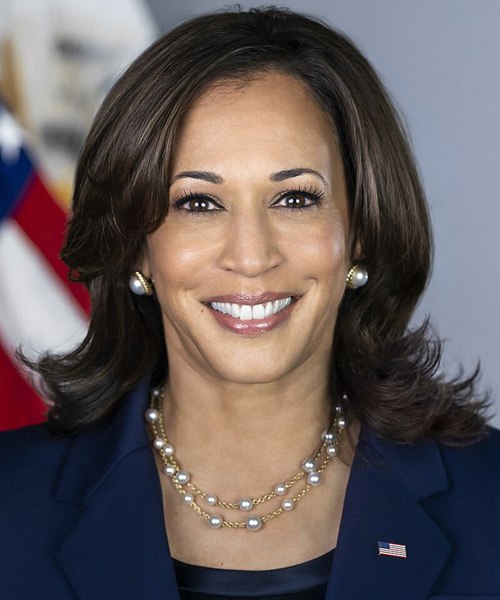Mahaveer Sanglikar
Influence of Indian Americans in the USA: Professions, Average Income, Influence, and Comparison with White Americans
The Indian-American community represents one of the most prosperous and rapidly growing ethnic groups in the United States. With a population exceeding 4 million, Indian-Americans have carved out a niche as a highly educated, economically successful, and influential community. Their journey from being a small group of immigrants to becoming a significant socio-economic force in the U.S. is a remarkable story. It is a story of resilience, adaptability, and hard work.
This article highlights various aspects of the Indian-American community. It focuses on their professional achievements, income levels, socio-political influence, and a comparison with White Americans. There is a special focus on the role and contributions of Indian women in the U.S.
History of Indian Migration to America
Indian migration to the United States began in earnest in the late 19th and early 20th centuries. However, it was the Immigration and Nationality Act of 1965 that truly opened the doors for a significant influx of Indian immigrants. This legislation prioritized skilled workers, especially those with expertise in science, technology, and medicine. Consequently, a large number of Indian professionals, including women—particularly engineers, doctors, and scientists—migrated to the U.S., thereby laying the foundation for the community’s success.
Major Professions of Indian Americans
Indian-Americans have made significant inroads into several professional fields, with a notable concentration in STEM (Science, Technology, Engineering, and Mathematics) disciplines. However, their presence extends beyond these areas, reflecting the community’s diverse talents and interests.
Information Technology (IT)
The IT sector is perhaps the most prominent area where Indian-Americans have excelled. From Silicon Valley to Wall Street, Indian technologists, engineers, and executives play critical roles in some of the most influential tech companies in the world. Indian-Americans like Sundar Pichai (CEO of Alphabet Inc.), Satya Nadella (CEO of Microsoft), and Arvind Krishna (CEO of IBM) are leading global giants, underscoring the community’s impact on the tech industry. Additionally, many Indian-Americans have founded successful tech startups, contributing to the vibrant innovation ecosystem in the U.S.

Medicine
The medical field is another area where Indian-Americans have established a strong presence. According to the American Association of Physicians of Indian Origin (AAPI), there are over 100,000 Indian-American doctors in the U.S., making up a significant proportion of the country’s healthcare providers. Indian-American doctors are known for their expertise in various specialties, including cardiology, oncology, and surgery. Their contributions are critical to the healthcare system, especially in underserved areas where they often provide essential services.
Academia and Research
Indian-Americans are also highly represented in academia. Many hold prestigious faculty positions at top universities, contributing to research and education in fields ranging from computer science and engineering to economics and social sciences. Indian-American academics have been recognized with numerous awards and honors, reflecting their significant contributions to knowledge and innovation.
Entrepreneurship
Indian Americans have thrived in entrepreneurship, starting successful businesses across diverse industries such as technology, hospitality, and retail. Their entrepreneurial spirit is evident in the success of companies like Sun Microsystems (co-founded by Vinod Khosla), Bose Corporation (founded by Amar Bose), and Zscaler (founded by Jay Chaudhry). Indian-American entrepreneurs are creating jobs, generating wealth, and contributing to the dynamism of the U.S. economy.
Law, Politics, and Public Service
In recent years, Indian-Americans have increasingly entered law, politics, and public service. With a strong tradition of civic engagement and a growing population, the community has produced prominent politicians, including Kamala Harris, the first Indian-American Vice President of the United States, and lawmakers like Pramila Jayapal and Ro Khanna. Indian-Americans are making their mark as judges, attorneys, and public policy experts, influencing legislation and governance at various levels.
Role of Indian-American Women

Indian-American women have played a crucial role in the success and influence of the Indian diaspora in the United States. They have excelled in various professional fields, contributed to cultural and social causes, and increasingly took on leadership roles in different sectors.
Education and Academia
Indian-American women are highly represented in education and academia. Many hold advanced degrees in engineering, medicine, law, and business. Indian-American women like Dr. Gita Gopinath, the Chief Economist of the International Monetary Fund, and Dr. Padmasree Warrior, the former CTO of Cisco, have made significant contributions to their respective fields. In academia, Indian American women hold faculty positions at prestigious universities, contributing to research and teaching in various disciplines.
Healthcare
Indian-American women are prominent in the healthcare sector, where they serve as doctors, nurses, pharmacists, and healthcare administrators. They play a critical role in providing medical care across the country, often working in underserved communities. Indian-American women doctors, like Dr. Kavita Patel, a healthcare policy expert who served in the Obama administration, have also been involved in shaping healthcare policy at the national level.
Entrepreneurship and Business
Indian-American women have made significant strides in entrepreneurship and business. They have founded and led companies in diverse industries, including technology, fashion, and media. Entrepreneurs like Indra Nooyi, the former CEO of PepsiCo, and Reshma Saujani, the founder of Girls Who Code, have not only achieved business success but have also become role models for women worldwide.
Politics and Public Service
Indian American women are increasingly making their mark in politics and public service. Kamala Harris, as the first female Vice President of Indian descent, represents a historic achievement for the community.
Other Indian-American women, such as Seema Verma, the former Administrator of the Centers for Medicare and Medicaid Services, and Neera Tanden, President of the Center for American Progress, have held influential positions in government and policy-making.
Cultural and Social Contributions
Indian-American women have also been active in promoting cultural and social causes. They are involved in organizations that support education, healthcare, women’s rights, and immigrant communities. Indian-American women authors, artists, and filmmakers have contributed to the cultural landscape of the U.S., bringing Indian perspectives to a broader audience. Notable figures include authors like Jhumpa Lahiri and filmmakers like Mira Nair, who have garnered critical acclaim for their work.
Indian-American women often navigate the complexities of balancing traditional cultural values with modern American life. They play a key role in maintaining cultural traditions within their families and communities while also pursuing professional careers and civic engagement. This dual role highlights the adaptability and resilience of Indian-American women as they contribute to both their heritage and their adopted country.
Average Income of Indian Americans
The economic success of Indian-Americans is reflected in their income levels, which are among the highest of any ethnic group in the United States.
Median Household Income
The median household income for Indian Americans stands at approximately $123,700, according to recent U.S. Census Bureau data. This figure is significantly higher than the national median household income of around $70,000. The high median income is indicative of the community’s concentration in well-paying professions, particularly in technology, healthcare, and finance.
Comparison with White Americans
Indian Americans earn considerably more than White Americans, whose median household income is about $74,912. Several factors contribute to this income disparity, including the higher levels of educational attainment among Indian Americans, their concentration in high-demand, high-paying industries, and their entrepreneurial success.
Wealth Accumulation
Beyond income, Indian Americans have also made strides in wealth accumulation. Many have invested in real estate, technology stocks, and businesses, contributing to their financial stability and growth. The community’s focus on education, professional development, and entrepreneurship has created a virtuous cycle of economic prosperity.
Influence of Indian Americans
Indian-Americans have become a powerful force in American society, wielding influence in various domains, from politics and culture to economics and social activism.
Political Influence
The political influence of Indian-Americans has grown significantly over the past two decades. As the community’s population and economic power have increased, so too has its political clout. Indian-Americans are increasingly involved in political campaigns, both as candidates and as donors.
Kamala Harris’s election as Vice President in 2020 marked a historic milestone, highlighting the community’s growing political influence. Additionally, Indian-Americans like Nikki Haley (former Governor of South Carolina and U.S. Ambassador to the United Nations) and Bobby Jindal (former Governor of Louisiana) have held significant political offices, demonstrating the community’s ability to ascend to the highest levels of American politics.
Cultural Influence
Indian culture has become increasingly visible and influential in the United States. Bollywood films, Indian cuisine, yoga, and festivals like Diwali and Holi have become mainstream, and embraced by Americans of all backgrounds. The influence of Indian-Americans in the entertainment industry is also growing, with actors like Mindy Kaling, Kal Penn, and Priyanka Chopra gaining prominence. The rise of Indian-American writers, artists, and musicians further highlights the community’s cultural contributions.
Economic Influence
The economic influence of Indian Americans extends beyond their high-income levels. The community is known for its entrepreneurial spirit, with Indian-Americans owning a significant number of small and medium-sized businesses across the country. These businesses not only contribute to the economy but also create jobs and foster innovation. Furthermore, Indian-American investors and venture capitalists play a crucial role in funding startups, particularly in the technology sector.
Social and Philanthropic Influence
Indian-Americans are increasingly becoming prominent figures in social activism and philanthropy, contributing significantly to various causes both within the United States and globally. Their efforts range from advocating for civil rights, education, and healthcare reform to supporting initiatives that address poverty, climate change, and social justice. Many Indian-Americans are leveraging their resources, networks, and expertise to drive change through nonprofit organizations, community outreach programs, and public policy advocacy.
Prominent individuals and groups within the Indian-American community have established foundations and charitable trusts that fund scholarships, healthcare initiatives, and disaster relief efforts. They are also active in grassroots movements, often working to raise awareness about issues affecting marginalized communities. Their contributions are helping to foster a more inclusive and equitable society, reflecting the community’s deep commitment to social responsibility and humanitarian values.
Conclusion: Influence of Indian Americans
The Indian American community in the United States demonstrates the power of hard work, education, and perseverance. Rooted in diverse professions like technology, medicine, academia, business, and politics, Indian Americans have made an indelible mark on American society. They achieve high average incomes, exert substantial influence across various sectors, and increasingly represent leadership roles both within the U.S. and globally.
Indian-American women, in particular, have played a pivotal role in this success story, breaking barriers and setting new standards in their respective fields. From leading global corporations to shaping public policy and contributing to cultural enrichment, they have proven that gender is no barrier to excellence and impact.
You May Like to Read …..
Top 10 Most Inspiring American Business Movies
Unlocking Prosperity: Clearing Money Blocks and Building Wealth
Government Scholarships For Higher Studies
Jain Community: Achievements, Contributions and Influence
They Won Hindi (Hindi Short Stories and Articles)
They Won Marathi (Marathi Short Stories and Articles)
